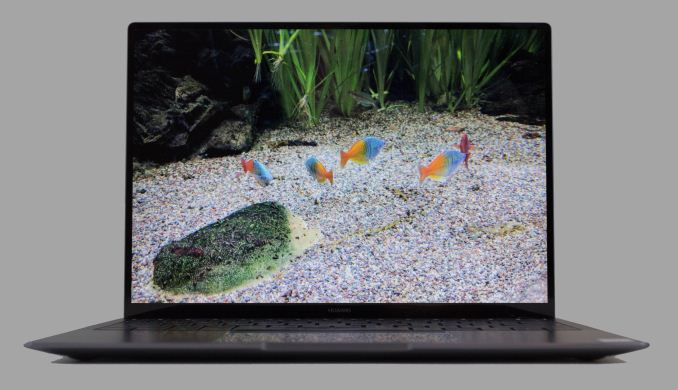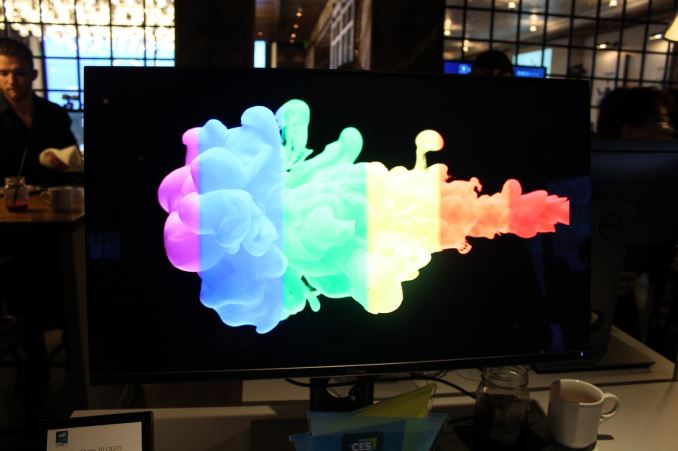AT 101: Understanding Laptop Displays & How We Test Them
by Brett Howse on July 10, 2018 8:00 AM ESTFinal Words
Don’t think of this as an in-depth look at any of these topics. Each on its own could arguably require a full-length article, or more. Color management is a field unto itself, and we’ve only touched on the tip of the iceberg.
The display on a laptop is arguably the most important aspect, since it’s the one thing you will always be using. Other factors can be as important, such as the keyboard, battery life, and build quality, depending on application, but the display can make or break the experience.
Luckily the bar for display quality has gone up significantly in recent years. It’s difficult, but not impossible, to find a premium or business laptop without an IPS display now, and that alone has increased the usability of laptops considerably. Some gaming laptops may still offer TN displays with ultra-high refresh rates for the ultimate in gaming smoothness, but those same devices will generally be offered with a lower refresh rate IPS panel as an option as well. TN still has its advantages, but for most computing needs, IPS wins out.

The Huawei MateBook X Pro features a 3000x2000 LTPS IPS Display
OLED still has some work needed before it will be a mainstream option in the laptop market. The main one is battery life. In our review of the Lenovo ThinkPad X1 Yoga we were able to test both the LCD model and the OLED model. The OLED version achieved only 59% of the battery life of the LCD version, which worked out to about 2.5 hours less. The OLED power problems are exacerbated by the amount of content on a PC which is white, such as most web browsing, word documents, spreadsheets, and more. This is the worst case scenario for OLED, and though some websites have dark modes, the majority do not. Windows does support a dark mode, but for most content it’s simply some chrome around the edges.With OLED there’s also issues with ghosting and burn-in which can be a problem on the PC because so much content like the taskbar is static.
Dell's 30-inch OLED monitor shown at CES
We’ve also seen some nice strides in terms of efficiency upgrades on LCD panels, especially with high-resolution (high-density) displays, thanks to new materials being used to construct the underlying thin-film transistors. It’s likely that a lot of effort is being spent here by display manufacturers to continue to improve this. High resolution used to be a liability in terms of battery life, but laptops like the Huawei MateBook X Pro offer exceptional battery life and efficiency despite the 3000x2000 resolution, likely in a large part due to the LTPS TFT they are using. The MateBook X Pro is as efficient as the ASUS ZenBook 3 with the same CPU and only a 1920x1080 display.
We’re still at a point where Windows expects you to be using the sRGB color space, and displays – especially laptops without proper 3D LUTs that can be set to different gamuts – can be problematic. Some Adobe RGB-capable laptops like the Dell XPS 15 do have the ability to change the gamut in hardware though, so you can set it to Adobe RGB when working on photography, and then back to sRGB for the rest of the time. The lack of a proper color management system at the OS level in Windows means that if you don’t do this, colors will be blown out all across the system, from the wallpaper to the web browser. Microsoft has added a lot more functionality on transforms with their HDR stack though, so perhaps this will be solved eventually. This is one advantage Apple has held for a long time.
 Blown out colors on the Photos App vs Photoshop Elements
Blown out colors on the Photos App vs Photoshop Elements
Finally, we went over how we test and why. Testing a display objectively is the only method we have available for an apples to apples comparison. Some people may prefer the colors to be a bit oversaturated, but they aren’t seeing the true image that they should. Once you’ve used an accurate display, it’s difficult to go back, and having a display calibrated at the factory is always the way to go. If Apple can afford to do it on a $399 iPad, certainly a laptop manufacturer can find it in their budget to calibrate a $2000 Ultrabook.
There’s a lot to look forward to with displays as well. High resolution is already here, but HDR and wider color spaces are going to change the game over the next couple of years. There’s no way to stop the march of technology.











49 Comments
View All Comments
ikjadoon - Tuesday, July 10, 2018 - link
Excellent overview, Brett. I will be linking this many weeks onward.I’m curious how you were able to measure the SB2’s display power usage—that sounds incredibly handy as panel efficiency seems to be the name of the game here. Is this through software or hardware, like clamping or voltage measurements?
I had high hopes for IGZO penetrating and overtaking a-Si, but it seems like it’s the forgotten middle child sans one or two poster models like the Razer Blade.
Seeing LTPS proliferate, though, is welcome: Lenovo’s using it on their X1 Yoga HDR display and Huawei’s MateBook has won a lot of hearts (and eyes).
MajGenRelativity - Tuesday, July 10, 2018 - link
I enjoyed this article very much. I didn't know VA was a different technology, and assumed it was some subtype of IPS, so I'm glad that was cleared up.I look forward to in-depth articles about other components!
Brett Howse - Tuesday, July 10, 2018 - link
Thanks!Ehart - Tuesday, July 10, 2018 - link
Really nice article, but you're falling into some common confusion on HDR10. HDR10 is really only defined as a 'media profile', and for a display it means that it accepts at least 10 bits to support that profile. For PC displays, they often can accept a 12 bit signal. (I'm using one right now.)DanNeely - Tuesday, July 10, 2018 - link
Is "3k" eg 3200x1800 going out of favor on 13" laptops? I'd be rather disappointed if it is.At 280 DPI it's equivalent to 4k on a 15.6" panel, and on anything that doens't have broken DPI scaling is high enough resolution that you can pick whatever scaling factor you want and have sharp can't come close to seeing the pixels anymore. The higher, going higher eg 4k and 330DPI doesn't really get anything except higher power consumption and lower battery life IMO.
Brett Howse - Tuesday, July 10, 2018 - link
Seems to be less options for 3200x1800 these days.CaedenV - Tuesday, July 10, 2018 - link
"so the loss of 16:10 was mourned by many."Yeah... I miss my 1200p 16:10 display. It wasnt the best quality... but man was it useful!
keg504 - Tuesday, July 10, 2018 - link
If nit is not an SI unit, why not use lux, which is, and is the same quantity (from my understanding)?Death666Angel - Tuesday, July 10, 2018 - link
It isn't, though. The SI unit for nits would be candela/square_meter [cd/m²]. Lux = Lumen/square_meter [lm/m²] has an additional light source component and a distant component in it, because it is used to measure the light that hits a certain point, not the source itself. Most non-US based tech reviewers I frequent use cd/m².Amoro - Tuesday, July 10, 2018 - link
What about adaptive refresh rate technologies?